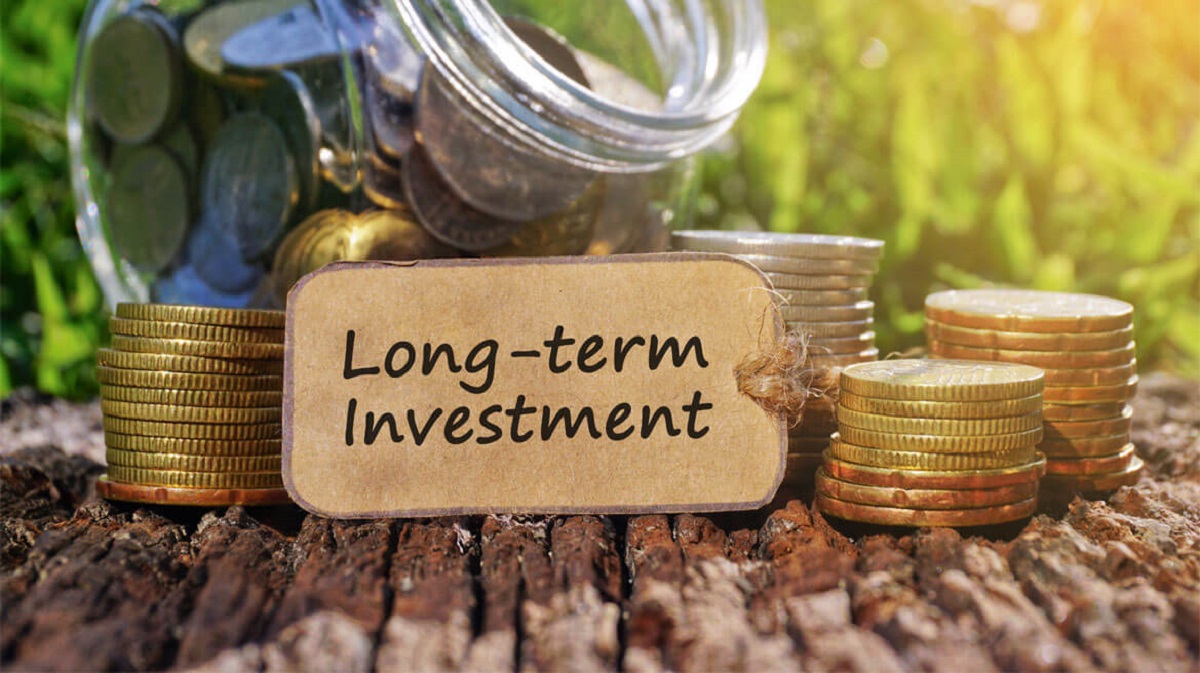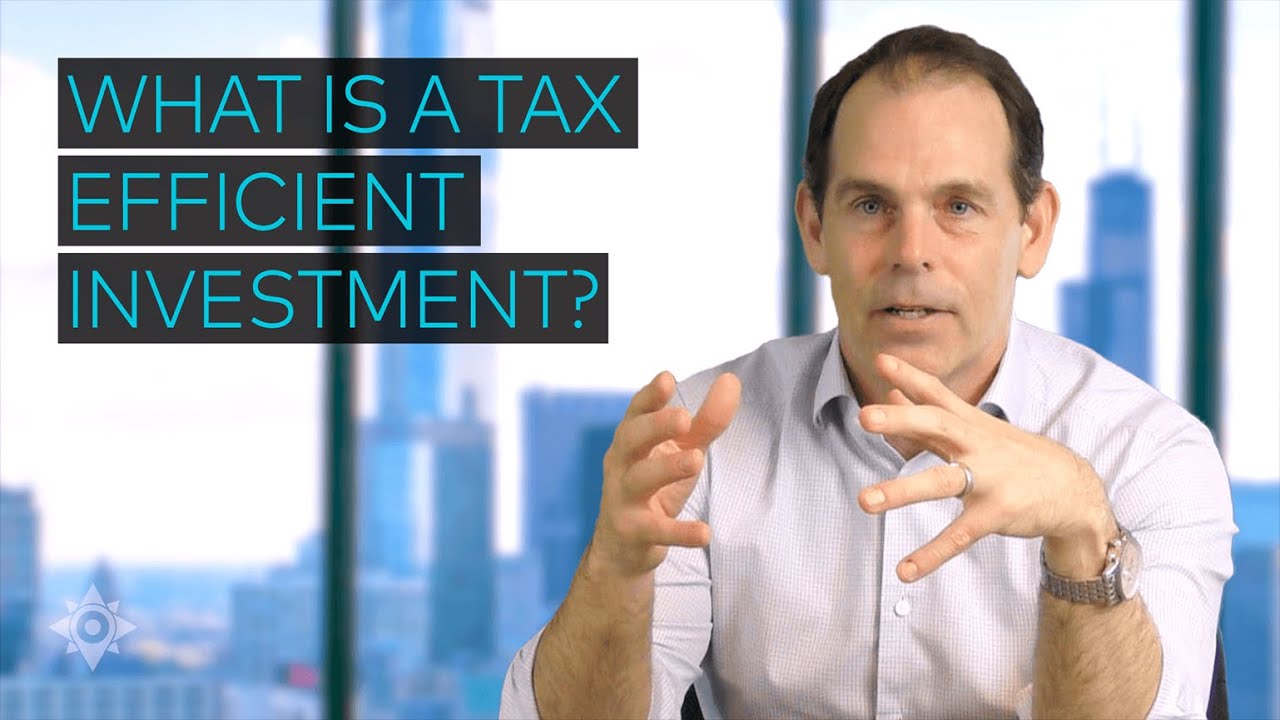Introduction
Welcome to the world of retirement investments, where the decisions you make today can have a profound impact on your financial future. Planning for retirement involves careful consideration, educated choices, and understanding the concept of a reasonable rate of return.
A rate of return on retirement investments refers to the percentage of income generated from these investments over a specific period of time. It serves as a performance indicator, providing insight into how well your investments are growing. But what exactly is considered a reasonable rate of return?
Determining a reasonable rate of return is not a one-size-fits-all approach. It depends on various factors such as risk tolerance, investment goals, and market conditions. While it may be tempting to chase after high returns, it’s crucial to maintain a realistic perspective and consider the potential risks involved.
In this article, we will explore the factors that affect retirement investments and how they can impact the rate of return. We will also discuss historical average returns, the importance of inflation, and the need to balance risk and return. By the end, you will have a better understanding of what to expect from your retirement investments and how to evaluate your investment strategy accordingly.
It’s important to note that this article aims to provide general information and guidance. Seeking professional advice from a qualified financial advisor is essential to match your specific financial situation and goals.
Understanding Rate of Return
When it comes to retirement investments, understanding the rate of return is essential. Simply put, the rate of return is the gain or loss on an investment over a specific period of time. It is expressed as a percentage and measures the profitability of an investment.
For example, if you invest $10,000 in a mutual fund and after one year, your investment has grown to $11,000, the rate of return for that year would be 10%. Conversely, if your investment dropped to $9,000, the rate of return would be -10%.
The rate of return serves as a crucial metric in evaluating the performance of your retirement investments. It provides insights into how effectively your money is working for you and can help you make informed decisions about your investment strategy.
It’s important to note that there are two types of rate of return: nominal rate of return and real rate of return. The nominal rate of return is the actual percentage increase or decrease in the value of an investment, without accounting for inflation. On the other hand, the real rate of return factors in the impact of inflation, giving a more accurate measure of the purchasing power of your investment.
Understanding the difference between these two rates of return is crucial in evaluating the true value of your investments. While a nominal rate of return may seem attractive, it can be eroded by inflation over time. Therefore, focusing on the real rate of return can provide a more realistic assessment of your investment’s growth.
When assessing the rate of return of your retirement investments, it’s essential to consider the time period over which the return is calculated. Short-term returns may fluctuate, but it’s the long-term performance that matters most for retirement planning.
Keep in mind that investments inherently involve risk, and higher potential returns typically come with higher risk. Balancing risk and return is crucial in finding an investment strategy that aligns with your risk tolerance and investment goals.
In the following sections, we will explore the various factors that can affect the rate of return on your retirement investments and how they should be considered when planning for a financially secure retirement.
Factors Affecting Retirement Investments
Several factors can play a significant role in influencing the rate of return on your retirement investments. Understanding these factors is essential for optimizing your investment strategy and achieving your financial goals. Let’s explore some of the key factors:
1. Asset Allocation:
The allocation of your investments across various asset classes, such as stocks, bonds, real estate, and cash, can have a significant impact on your rate of return. Each asset class has its own level of risk and potential for returns. Diversifying your portfolio by spreading your investments across different asset classes can help mitigate risk and enhance potential returns.
2. Economic Conditions:
Economic conditions, including interest rates, inflation rates, and market volatility, can affect the performance of your retirement investments. A strong economy and low inflation may result in higher returns, while a sluggish economy or high inflation can lead to lower returns. Staying informed about current economic trends can help you navigate your investment strategy accordingly.
3. Market Performance:
The performance of financial markets can greatly impact the rate of return on your investments. Bull markets, characterized by rising stock prices, tend to offer higher returns, while bear markets, characterized by declining stock prices, can lead to lower returns. It’s important to monitor market conditions and exercise patience during market downturns.
4. Investment Expenses:
The expense ratio of your investments, including management fees, transaction costs, and commissions, can eat into your overall returns. Lowering investment expenses can have a positive impact on your rate of return. Therefore, it’s crucial to evaluate the costs associated with your investment options and choose investments with reasonable fees.
5. Time Horizon:
The length of time you have until retirement can affect your investment decisions and potential returns. Generally, a longer time horizon allows for more aggressive investment strategies that can potentially yield higher returns. However, as retirement approaches, it’s important to assess your risk tolerance and shift towards more conservative investments to protect your accumulated wealth.
6. Contribution and Withdrawal Patterns:
The amount and frequency of your contributions to retirement accounts, as well as your withdrawal strategy during retirement, can impact your rate of return. Consistently contributing to your retirement accounts over time can lead to compounded growth, while a well-thought-out withdrawal strategy can help ensure that your investments last throughout your retirement years.
By considering these factors and adapting your investment strategy accordingly, you can increase the likelihood of achieving a reasonable rate of return on your retirement investments. However, it’s important to remember that these factors are dynamic and may require periodic adjustments to your investment plan. Regularly reviewing and reassessing your portfolio in light of changing circumstances can help you stay on track towards a financially secure retirement.
Historical Average Returns
Examining historical average returns can provide valuable insights into the performance of different asset classes and help you set expectations for your retirement investments. While past performance doesn’t guarantee future results, understanding historical trends can be a useful guideline.
Over the long term, the stock market has historically provided higher average returns compared to other investment options such as bonds or cash. According to historical data, the average annual return of the S&P 500, a widely used benchmark for the U.S. stock market, has been around 7-10% over several decades.
Fixed-income investments like bonds generally offer lower returns than stocks but come with less volatility and risk. Historical average returns for bonds have ranged from 4-6% annually, depending on the type of bonds and prevailing interest rates.
Cash and money market investments provide the lowest potential returns, often comparable to inflation rates. Historically, average annual returns for cash have been around 2-3%.
It’s important to note that these figures are historical averages and don’t guarantee future performance. Market conditions, economic factors, and individual investment choices can lead to variations in actual returns.
Furthermore, it’s crucial to understand that average returns can be impacted by specific time periods. Some years may experience significant market fluctuations and negative returns, while others may witness exceptional growth. Averages can be skewed by outliers, so it’s essential to consider the range of returns over multiple years.
When planning for retirement, it’s advisable to analyze your risk tolerance, financial goals, and time horizon, and then create a diversified portfolio that aligns with your objectives. Passive investing strategies, such as index funds or exchange-traded funds (ETFs), offer exposure to broad market performance and can be a reliable option for achieving average long-term returns.
By understanding historical average returns for different asset classes, you can gain a better perspective on what to expect from your retirement investments. However, keep in mind that every individual’s financial situation is unique, and working with a qualified financial advisor can help tailor an investment strategy that suits your specific needs and goals.
Importance of Inflation
When planning for retirement investments, it’s crucial to consider the impact of inflation on the purchasing power of your savings. Inflation refers to the general increase in prices of goods and services over time, reducing the value of money.
Inflation erodes the purchasing power of your money, meaning that the same amount of money will buy fewer goods and services in the future. For example, if the inflation rate is 2%, the price of goods will increase by an average of 2% each year.
This has significant implications for retirement planning. Let’s say you have a retirement goal of $1 million, to be achieved in 30 years. Without accounting for inflation, $1 million may seem like a substantial amount. However, factoring in an average annual inflation rate of 2%, the future value of $1 million would be significantly lower in terms of its purchasing power.
To protect your retirement savings from the impact of inflation, it’s important to consider investments that generate returns above the inflation rate. In other words, the rate of return on your investments should outpace inflation to ensure your money retains its value over time.
Historically, stocks have been considered a good hedge against inflation. Stocks represent ownership in companies, and as companies generate profits and grow, their stock prices tend to increase. This growth in value is often driven by rising prices of goods and services, counteracting the impact of inflation.
Bonds, on the other hand, may be affected by inflation. As inflation rises, the purchasing power of the fixed interest payments generated by bonds decreases. However, certain types of bonds, such as Treasury Inflation-Protected Securities (TIPS), are specifically designed to protect investors against inflation by adjusting their principal value with changes in inflation.
In addition to investing in assets with potential inflation-beating returns, you can also consider implementing strategies like cost-of-living adjustments (COLAs) during retirement. COLAs offer periodic increases in retirement income to account for inflation, ensuring that your standard of living is maintained over time.
By acknowledging the importance of inflation and incorporating inflation protection mechanisms into your investment plan, you can safeguard your retirement savings against the diminishing value caused by inflation. It’s essential to regularly review your investment portfolio and make adjustments as needed to stay ahead of inflation and secure a financially stable retirement.
Balancing Risk and Return
When it comes to retirement investments, finding the right balance between risk and return is crucial. Risk refers to the potential for loss or volatility in investments, while return is the financial gain you hope to achieve. Understanding the relationship between risk and return is essential for building a well-rounded investment portfolio.
Generally, investments with higher potential returns also come with higher levels of risk. For example, stocks have historically provided higher average returns compared to bonds or cash. However, stocks are also more volatile and can experience significant fluctuations in value over shorter periods.
On the other hand, bonds and cash investments are generally considered less risky but offer lower potential returns. They provide stability and serve as a safe haven during market downturns. Including a mix of assets with varying levels of risk in your portfolio is a strategy known as diversification, which helps mitigate risk and balance potential returns.
Understanding your risk tolerance is crucial in determining the right balance for your investment portfolio. Risk tolerance refers to your ability to withstand fluctuations and potential losses in your investments without panicking or making impulsive decisions. It is influenced by factors such as your age, financial goals, and personal circumstances.
Younger individuals with a longer time horizon until retirement may have a higher risk tolerance and can afford to allocate a larger portion of their portfolio to potentially higher-risk, higher-return investments such as stocks. This allows them to benefit from compounding growth over the long term.
Conversely, individuals nearing retirement or with a lower risk tolerance may prefer a more conservative investment approach. They may choose to allocate a higher proportion of their portfolio to fixed-income investments like bonds and cash, which offer more stability and preservation of capital.
Regularly reviewing and rebalancing your investment portfolio is essential to maintain the desired risk-return balance. Over time, the value of different assets within your portfolio may change, causing your asset allocation to deviate from your intended targets. Rebalancing involves selling overperforming assets and reinvesting in underperforming ones, ensuring that your portfolio aligns with your risk tolerance and investment goals.
Seeking professional advice from a qualified financial advisor can be invaluable when it comes to balancing risk and return. A financial advisor can assess your risk tolerance, help you define your investment goals, and provide recommendations on constructing a diversified portfolio that suits your individual needs and objectives.
Remember, finding the right balance between risk and return is not a one-time decision but an ongoing process. Regular monitoring, adjustment, and staying informed about market trends are essential for maintaining a well-managed portfolio that maximizes returns while managing risk.
Considerations for Different Retirement Investment Options
When planning for retirement, it’s important to explore the various investment options available to you. Each option offers unique features and considerations that can impact your rate of return and retirement income. Let’s delve into some common retirement investment options:
1. Stocks
Investing in individual stocks or exchange-traded funds (ETFs) can offer the potential for significant long-term returns. However, stocks are also subject to market volatility and carry a higher level of risk. Consider your risk tolerance and time horizon when allocating a portion of your portfolio to stocks.
2. Bonds
Bonds are fixed-income investments that come with lower risk compared to stocks. They provide regular interest payments and return the principal amount upon maturity. Treasury bonds, municipal bonds, and corporate bonds are some common options. Understanding the creditworthiness of the issuer and prevailing interest rates is important when investing in bonds.
3. Mutual Funds
Mutual funds pool money from multiple investors to invest in a diversified portfolio of stocks, bonds, or other assets. They offer instant diversification and are managed by professionals. Consider the fees, historical performance, and the fund’s investment strategy when selecting mutual funds for your retirement portfolio.
4. Real Estate
Investing in real estate, whether through rental properties, real estate investment trusts (REITs), or real estate crowdfunding platforms, can generate income and potential appreciation. Real estate investments can provide diversification and a hedge against inflation. Evaluate the local market, property management considerations, and potential risks before investing in real estate.
5. Annuities
Annuities are insurance contracts that provide a steady stream of income for retirement. They can offer guaranteed payouts for life or a specific period. Consider the type of annuity (fixed, variable, or indexed), fees, surrender charges, and the financial strength of the insurance company before purchasing an annuity.
6. Retirement Accounts
Utilize retirement accounts such as 401(k), Individual Retirement Accounts (IRAs), or Roth IRAs for tax-advantaged retirement savings. These accounts offer benefits like tax deductions for contributions or tax-free withdrawals in retirement. Understand the contribution limits, withdrawal rules, and any penalties associated with these accounts.
7. Health Savings Accounts (HSAs)
HSAs are tax-advantaged accounts that can be used to save for medical expenses. Contributions are tax-deductible, and withdrawals for qualified medical expenses are tax-free. Considering the potential for rising healthcare costs in retirement, HSAs can be a valuable addition to your retirement investment strategy.
Each retirement investment option has its own considerations, advantages, and risks. It’s essential to carefully evaluate these options based on your risk tolerance, financial goals, and time horizon. Diversification across different asset classes and regular reviews of your investment strategy are key to achieving a well-balanced and successful retirement portfolio.
Setting Realistic Expectations
When it comes to retirement investments, setting realistic expectations is crucial to avoid disappointment and make informed financial decisions. Understanding the factors that influence investment returns can help you establish reasonable goals and plan accordingly.
It’s important to remember that investment returns are not guaranteed and can vary widely from year to year. The stock market, for example, can experience periods of significant growth, as well as periods of decline. It’s essential to approach investments with a long-term perspective, as short-term volatility may not accurately reflect the overall performance of your portfolio.
Another factor to consider is that past performance doesn’t guarantee future results. Just because an investment has performed well in the past doesn’t mean it will continue to do so. Market conditions, economic factors, and individual investment choices can all impact the future performance of your investments.
Additionally, it’s important to factor in the impact of fees and expenses on your investment returns. Transaction costs, management fees, and other expenses can eat into your overall returns. Be sure to carefully review the fees associated with your investments and choose options with reasonable costs.
Inflation is another critical consideration when setting expectations for your retirement investments. As we mentioned earlier, inflation erodes the purchasing power of your money over time. To account for inflation, it’s important to aim for investment returns that outpace inflation. This will help ensure that your savings can maintain their value and sustain your desired lifestyle during retirement.
When setting expectations for your retirement investments, consider your risk tolerance and financial goals. Investments with higher potential returns often come with higher levels of risk. Be realistic about your risk tolerance and choose investments that align with your comfort level. Striking a balance between risk and potential return is essential to achieve your financial objectives.
Lastly, seeking professional advice from a qualified financial advisor is crucial in setting realistic expectations. An advisor can provide personalized guidance based on your individual circumstances, goals, and risk tolerance. They can help you develop a comprehensive retirement plan and offer insights into reasonable expectations for your investments.
By understanding the various factors that influence investment returns, considering inflation, managing costs, and seeking professional advice, you can set realistic expectations for your retirement investments. This will help you make informed decisions, stay focused on your long-term goals, and increase your chances of achieving financial security in retirement.
Evaluating Your Retirement Investment Strategy
Regularly evaluating your retirement investment strategy is essential to ensure that it remains aligned with your financial goals and changing circumstances. As market conditions evolve and your personal situation may shift, reviewing and making necessary adjustments can help optimize your portfolio’s performance. Here are some key factors to consider when evaluating your retirement investment strategy:
1. Performance Review:
Assess the performance of your investments relative to your goals and expectations. Compare the returns of individual investments or your overall portfolio against relevant benchmarks. Identifying any underperforming assets can help you determine if they need to be replaced or reallocated.
2. Risk Assessment:
Review your risk tolerance and evaluate if it aligns with the level of risk in your investment portfolio. As you approach retirement, you may want to reduce your exposure to higher-risk assets and shift towards more conservative investments. Understanding your risk tolerance and adjusting your portfolio accordingly can help protect your accumulated wealth.
3. Asset Allocation:
Revisit your asset allocation to ensure it suits your current goals and risk tolerance. Consider rebalancing your portfolio if there are significant deviations from your target asset allocation. Rebalancing involves selling overperforming assets and reallocating funds to underperforming or underrepresented asset classes to restore the desired balance.
4. Tax Efficiency:
Evaluate the tax efficiency of your investment strategy to minimize unnecessary tax liabilities. Consider maximizing contributions to tax-advantaged retirement accounts, taking advantage of tax-efficient investment options, and utilizing strategies such as tax-loss harvesting to offset capital gains with capital losses.
5. Cost Analysis:
Review the costs associated with your investments, including management fees, trading expenses, and advisory fees. High fees can significantly impact your overall returns. Consider if there are lower-cost alternatives or if renegotiating fees with your financial advisor is possible.
6. Diversification:
Examine the diversification of your portfolio across different asset classes, industries, and geographic regions. Diversification can help mitigate risk and potentially enhance returns. Assess if there are any significant gaps in diversification and make adjustments accordingly to reduce concentration risk.
7. Future Projections and Cash Flow:
Forecast your future cash flow needs in retirement and assess if your investment strategy aligns with those needs. Consider any expected expenses, such as housing, healthcare, and travel, and determine if your projected income will be adequate to cover those costs. Adjust your investment plan if necessary to ensure a comfortable retirement.
Remember, evaluating your retirement investment strategy is an ongoing process. Regularly monitor and assess your investments, stay informed about market conditions, and be prepared to make adjustments when warranted. Seeking professional advice from a qualified financial advisor can provide valuable insights and help ensure your investment strategy remains on track to meet your retirement goals.
Seeking Professional Advice
Seeking professional advice from a qualified financial advisor can be instrumental in achieving your retirement investment goals. While it’s possible to manage your investments on your own, a financial advisor brings expertise, knowledge, and objectivity to help navigate the complexities of the financial landscape. Here are some reasons why seeking professional advice is beneficial:
1. Expertise and Knowledge:
Financial advisors are trained professionals who specialize in various aspects of personal finance, including retirement planning and investment management. They possess knowledge of complex financial products, tax strategies, and market trends. Their expertise can help you make well-informed decisions and navigate the intricacies of the investment landscape.
2. Tailored Financial Planning:
A financial advisor can assess your unique financial situation, risk tolerance, and retirement goals to develop a personalized financial plan. They can help you set realistic objectives, devise an appropriate asset allocation, and devise strategies to achieve your desired retirement milestones.
3. Objective Advice:
Emotions can influence our financial decisions, especially during market fluctuations. A financial advisor brings objectivity to the table, helping you make rational, data-driven choices. They can provide an unbiased perspective, ensuring you stay focused on long-term goals rather than succumbing to short-term market noise.
4. Monitoring and Rebalancing:
Market conditions and personal circumstances can change over time, necessitating adjustments to your investment portfolio. A financial advisor can regularly monitor your portfolio’s performance, make necessary rebalancing decisions, and update your strategy as circumstances evolve. This proactive approach helps you stay on track and adapt to changing financial landscapes.
5. Tax Efficiency:
Financial advisors can help minimize your tax liabilities through efficient investment strategies. They can guide you on utilizing tax-advantaged retirement accounts, implementing tax-loss harvesting techniques, and optimizing the timing of withdrawals to maximize after-tax income during retirement.
6. Estate Planning and Legacy Building:
Financial advisors can assist in developing comprehensive estate plans and legacy-building strategies. They can help you navigate issues such as wills, trusts, beneficiary designations, and charitable giving. Working with an advisor ensures that your estate is structured to meet your wishes and minimize tax implications.
7. Peace of Mind:
Collaborating with a financial advisor provides a sense of security and peace of mind. By entrusting your retirement investments to a dedicated professional, you can focus on other aspects of your life with confidence, knowing that you have a trusted advisor monitoring your financial well-being.
When selecting a financial advisor, ensure they are qualified, licensed, and adhere to fiduciary standards, meaning they are obligated to prioritize your best interests. Seek recommendations, conduct interviews, and evaluate their experience and track record. Establish clear communication and trust to build a long-term partnership that supports your financial success.
Remember, while a financial advisor can provide expertise and guidance, the ultimate decision-making rests with you. Active participation in the planning process is essential to ensure the financial plan aligns with your goals and values. Working hand-in-hand with a financial advisor can empower you to make informed decisions and stay on track towards a secure and fulfilling retirement.
Conclusion
Planning for retirement investments requires careful consideration, knowledge, and an understanding of various factors that can impact your financial future. It’s important to set realistic expectations, evaluate your risk tolerance, and diversify your portfolio to maximize returns while managing risk.
Understanding the rate of return and the factors that affect it is crucial. Historical average returns provide insights but don’t guarantee future results, and considering inflation is essential to protect your purchasing power.
Additionally, evaluating your retirement investment strategy regularly, seeking professional advice, and making necessary adjustments are key to staying on track towards your retirement goals. Financial advisors bring expertise, objectivity, and personalized guidance to help navigate the complexities of the financial landscape.
Ultimately, achieving a financially secure retirement requires proactive planning, ongoing monitoring, and informed decision-making. By employing a balanced investment strategy, setting realistic expectations, and seeking professional advice when needed, you can increase the likelihood of reaching your retirement goals and enjoying a comfortable future.

























